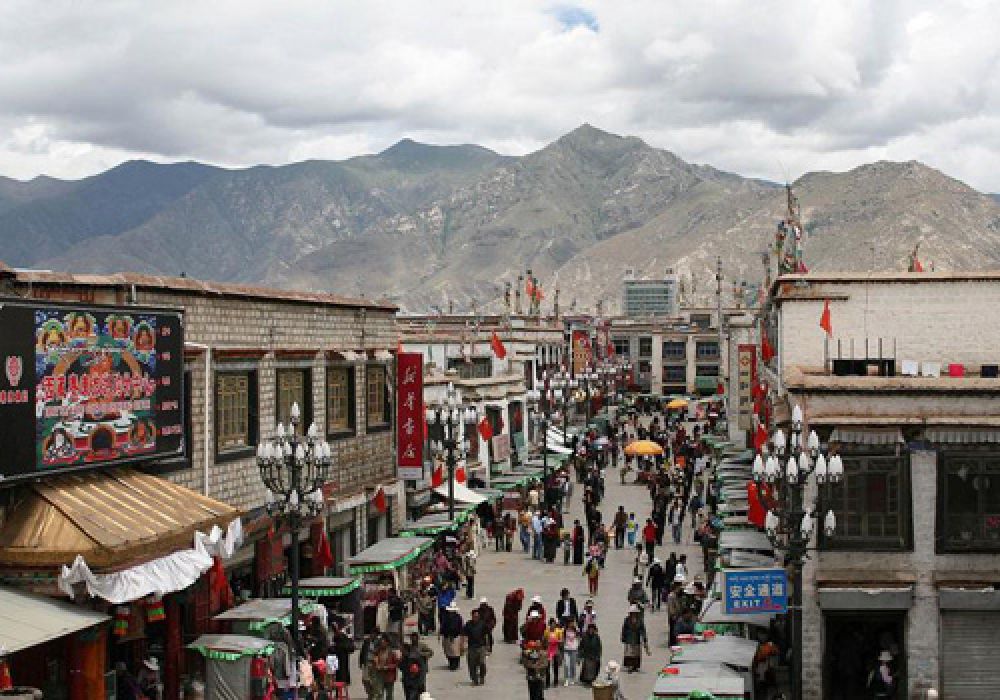

Lhasa, the spiritual heart of Tibet, is home to the ancient and bustling Barkhor Street. Known for its religious significance and unique cultural atmosphere, Barkhor Street has been a magnet for both pilgrims and tourists alike, who come to immerse themselves in its rich heritage.
Barkhor Street surrounds the sacred Jokhang Temple, which is considered the most important shrine in Tibet. Historically, the street developed as a pilgrim route because thousands of pilgrims would walk clockwise around the temple to pay their respects. Over the centuries, the street has maintained its religious importance and has grown into a thriving hub of trade and socialization in Lhasa.
Tourism in Barkhor Street started flourishing particularly after the Chinese government opened Tibet to international tourists in the 1980s. Since then, the local economy has increasingly benefited from the influx of tourists, both domestic and international. The area's many shops, stalls, and restaurants cater to visitors interested in Tibetan culture, religious artifacts, and local cuisine.
The architecture of Barkhor Street provides a glimpse into the past with its traditional Tibetan-style buildings. The wooden window frames, whitewashed walls, and prayer flags fluttering in the wind all contribute to a sense of timeless charm that captivates visitors.
As tourism increased, Barkhor Street became a space of cultural exchange where ideas and beliefs are openly shared between locals and visitors. Traditional Tibetan culture mixes with contemporary influences, providing a rich and diverse experience.
In recent years, the Chinese government and various organizations have undertaken efforts to preserve the traditional aspects of Barkhor Street. This has included restoration projects and regulations to maintain the historic environment and support responsible tourism that respects local customs and traditions.
In the face of global travel trends, Barkhor Street has experienced a shift towards more sustainable and experiential tourism. Many visitors now seek authentic experiences, such as participating in a kora (pilgrimage circuit) with locals or learning about Tibetan Buddhism directly from the community.
Tourists visiting Barkhor Street today can expect to delve into an array of sensory experiences, from the aroma of incense to the sound of prayer wheels spinning. Local markets offer everything from intricately woven carpets and traditional clothing to handcrafted silver jewelry and religious artifacts. The recent increase in boutique hotels and cafes blends modern comforts with traditional aesthetics, allowing visitors to enjoy their stay in a way that is respectful and reflective of Tibetan culture.
Barkhor Street remains a vital cultural artery in Lhasa, inviting those from around the world to witness the living history and spirituality of Tibet. Visitors come away with a deeper understanding of Tibetan Buddhism, a great appreciation for its vibrant culture, and memories of Barkhor's enchanting atmosphere to last a lifetime.